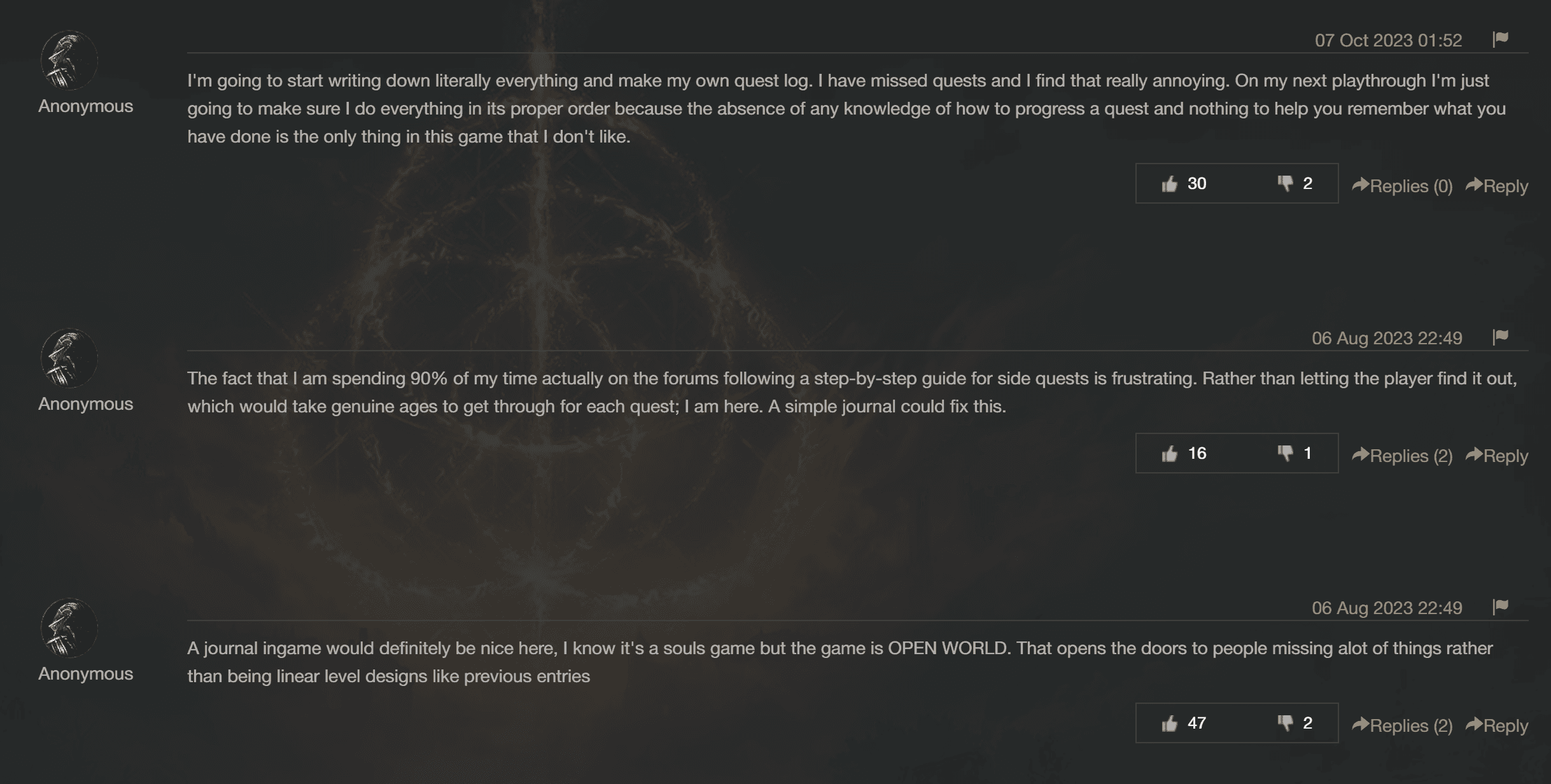


Role
Solo — Research, User Testing, Prototyping, Visual Design, UI Art Assets
Solo — Research, User Testing, Prototyping, Visual Design, UI Art Assets
Timeline
8 weeks
8 weeks
Overview
This is a case study of the game Elden Ring (FromSoftware, Inc.), to further understand UX/UI practices in a gaming context. Through my own research (playing the game) and testimonies of players online, I discovered areas where the games user experience could use improvements. I challenged myself to devise solutions that would respect the established game design principles.
This is a case study of the game Elden Ring (FromSoftware, Inc.), to further understand UX/UI practices in a gaming context. Through my own research (playing the game) and testimonies of players online, I discovered areas where the games user experience could use improvements. I challenged myself to devise solutions that would respect the established game design principles.
Problem
Elden Ring is acclaimed for its challenging gameplay and immersive design, yet players encounter significant UX obstacles that impact usability and engagement. As discussions grow within the gaming community around refining user experience without compromising core difficulty, this project aims to research Elden Ring’s existing UX, identifying specific pain points that affect gameplay flow. Through detailed analysis, this study seeks to propose targeted UX improvements that maintain the game’s intended level of challenge while enhancing the overall player experience.
Problem
Elden Ring is acclaimed for its challenging gameplay and immersive design, yet players encounter significant UX obstacles that impact usability and engagement. As discussions grow within the gaming community around refining user experience without compromising core difficulty, this project aims to research Elden Ring’s existing UX, identifying specific pain points that affect gameplay flow. Through detailed analysis, this study seeks to propose targeted UX improvements that maintain the game’s intended level of challenge while enhancing the overall player experience.



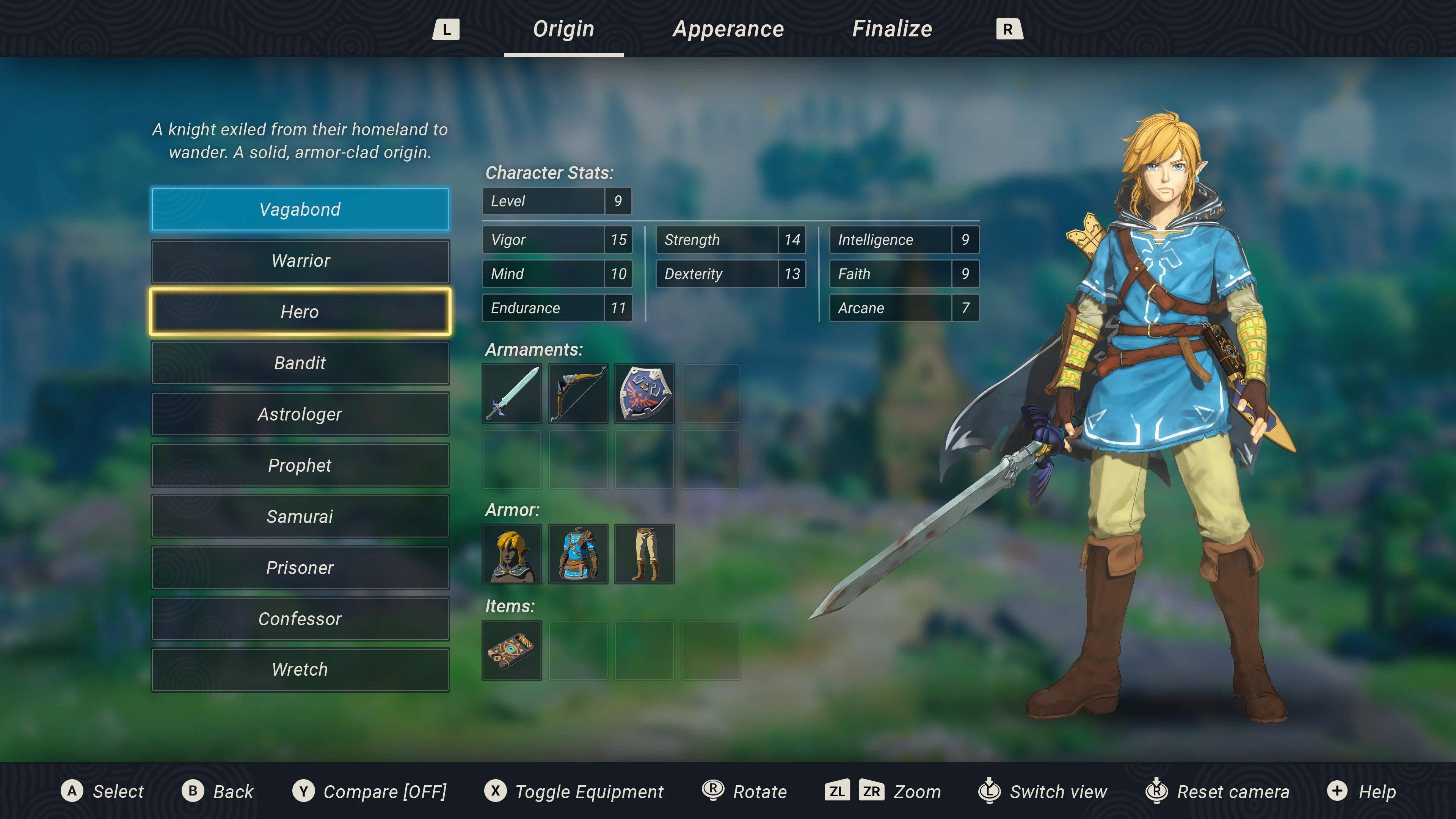





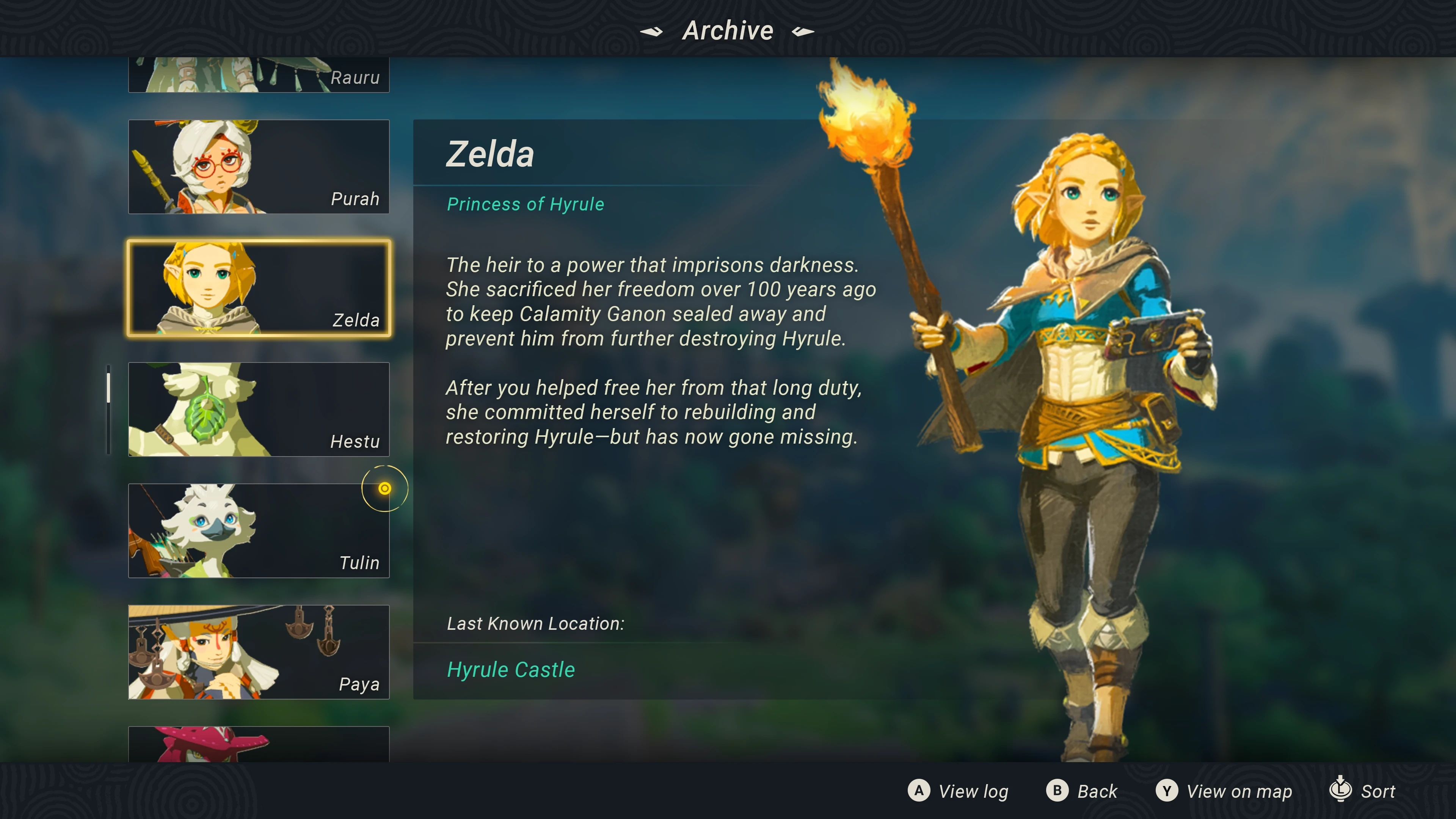


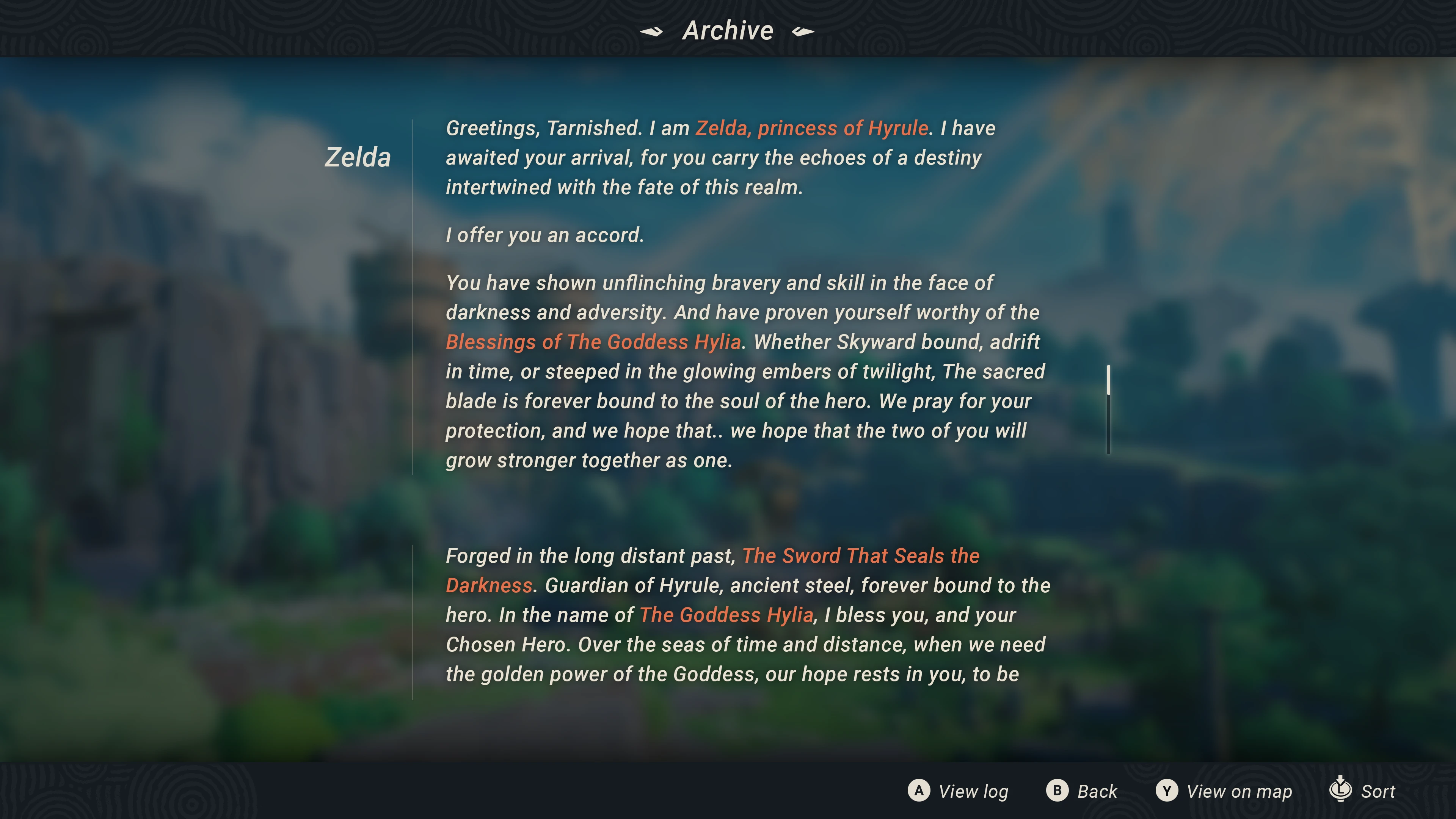


Goals
Player Journey Analysis
Objective: Map the player's journey from game start to early exploration, focusing on key interactions and accessibility challenges.
Outcome: A "paper" prototype & flowchart outlining gameplay choices and friction points in the initial experience.
Wireframe Design and Feedback
Objective: Create wireframes to enhance accessibility in menus, character creation, HUD, and quest guidance; gather player feedback via structured user testing.
Outcome: Insights into accessibility issues, refining designs through usability testing.
High-Fidelity Mockups
Objective: Develop polished mockups inspired by Legend of Zelda to create an intuitive yet unique UI style.
Outcome: A finalized, user-centered design that aligns with Elden Ring’s gameplay needs.
Accessibility Enhancements
Objective: Identify and recommend accessibility features, such as color-blind modes and high-contrast options.
Outcome: Practical accessibility improvements to broaden the game’s appeal without lowering its challenge.
Player Journey Analysis
Objective: Map the player's journey from game start to early exploration, focusing on key interactions and accessibility challenges.
Outcome: A "paper" prototype & flowchart outlining gameplay choices and friction points in the initial experience.
Wireframe Design and Feedback
Objective: Create wireframes to enhance accessibility in menus, character creation, HUD, and quest guidance; gather player feedback via structured user testing.
Outcome: Insights into accessibility issues, refining designs through usability testing.
High-Fidelity Mockups
Objective: Develop polished mockups inspired by Legend of Zelda to create an intuitive yet unique UI style.
Outcome: A finalized, user-centered design that aligns with Elden Ring’s gameplay needs.
Accessibility Enhancements
Objective: Identify and recommend accessibility features, such as color-blind modes and high-contrast options.
Outcome: Practical accessibility improvements to broaden the game’s appeal without lowering its challenge.


Research
"Paper" Prototype
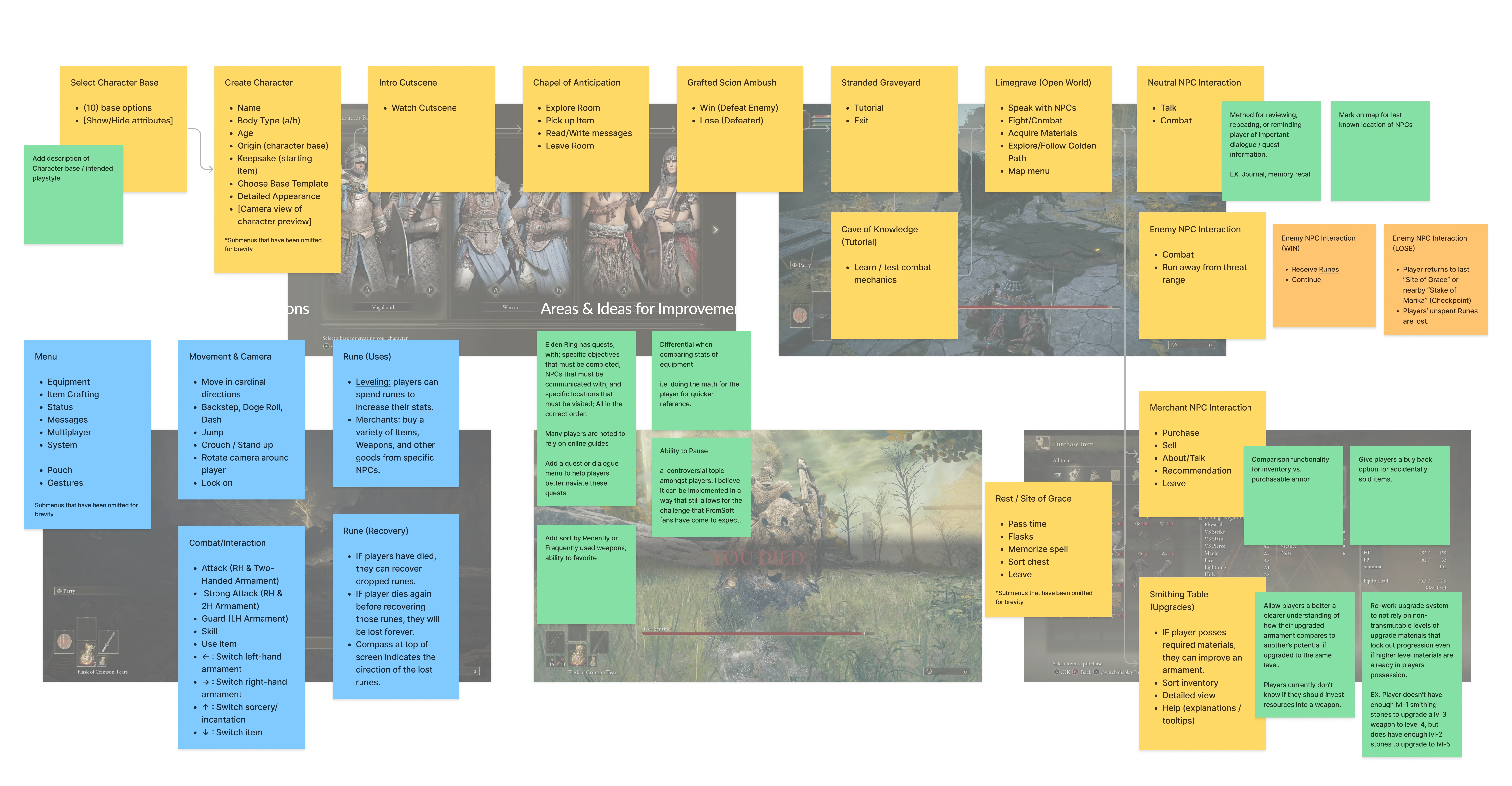


Flow Chart



Frustration with Quest Tracking in Elden Ring
There a several forum posts from players expressing frustration over Elden Ring's lack of an in-game quest log or journal system. Players mention spending extensive time on forums and guides to keep track of side quests, describing how easy it is to miss content due to the game’s minimal guidance. Many believe that a simple journal feature could enhance the experience, especially in an open-world setting where linear progression is not enforced, leading players to lose track of objectives. These comments highlight a key accessibility and UX pain point: players desire a way to track their progress without disrupting the game’s open-ended design.
This insight serves as a starting point for deeper exploration in user testing, eventually inspiring the proposed "Archive" feature .
User Testing & Initial Prototypes
Objectives
Evaluate wireframe clarity, focusing on start menu, character creation, gameplay HUD, and dialogue menu.
Determine if players can navigate the start menu, understand character creation options, recognize UI elements, and benefit from a potential dialogue log.
Logistics
Participants: 3-5 RPG players (ages 15-30, male & female).
Method: Static wireframes on iPad (in-person) or Figma (online), with recorded interviews.
Tasks: Identify and describe on-screen elements, answer structured questions, and discuss preferences and usability.
Key Test Areas
Start Menu: Assess preference between original and character-focused design, ease of navigation.
Character Creation: Determine if players understand origin selection and if additional information is needed.
Gameplay HUD: Verify if players can identify all UI elements.
Dialogue Log: Explore whether a dialogue log aids memory of NPC conversations without altering game design.
Outcome
Collect insights on wireframe usability and player preferences to inform iterative design improvements.
User Testing & Initial Prototypes
Objectives
Evaluate wireframe clarity, focusing on start menu, character creation, gameplay HUD, and dialogue menu.
Determine if players can navigate the start menu, understand character creation options, recognize UI elements, and benefit from a potential dialogue log.
Logistics
Participants: 3-5 RPG players (ages 15-30, male & female).
Method: Static wireframes on iPad (in-person) or Figma (online), with recorded interviews.
Tasks: Identify and describe on-screen elements, answer structured questions, and discuss preferences and usability.
Key Test Areas
Start Menu: Assess preference between original and character-focused design, ease of navigation.
Character Creation: Determine if players understand origin selection and if additional information is needed.
Gameplay HUD: Verify if players can identify all UI elements.
Dialogue Log: Explore whether a dialogue log aids memory of NPC conversations without altering game design.
Outcome
Collect insights on wireframe usability and player preferences to inform iterative design improvements.
Early Iterations



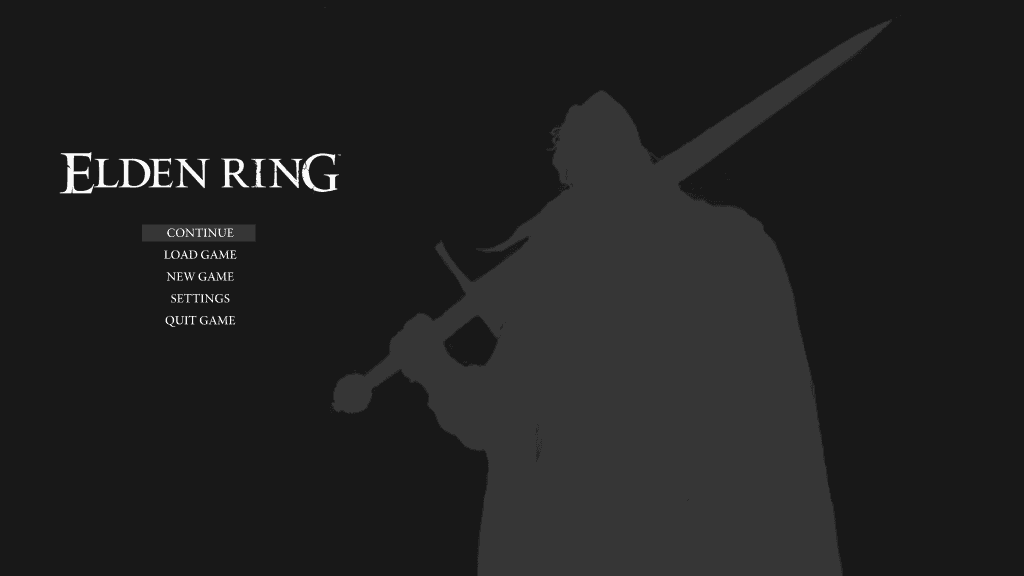


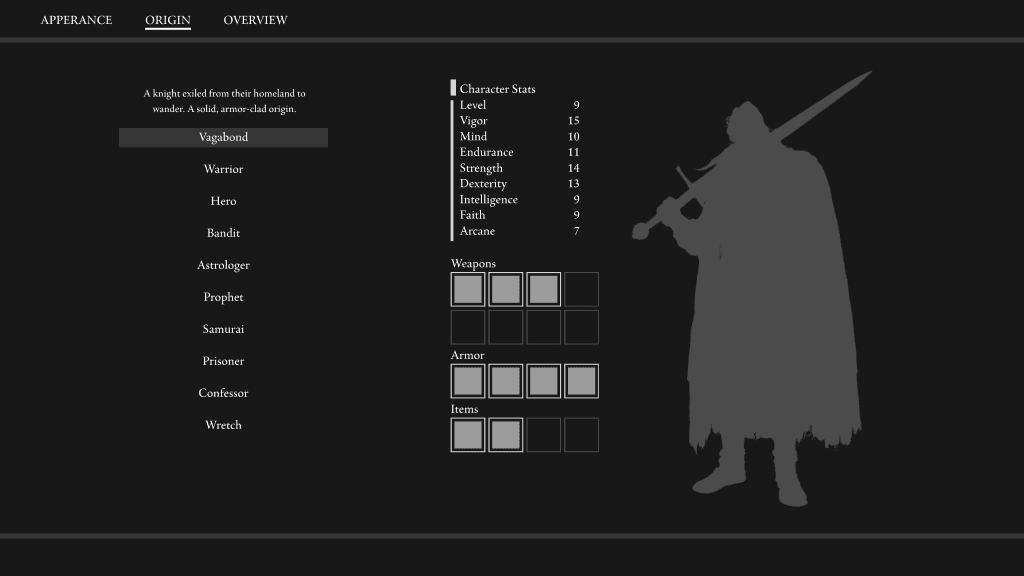








Noted Testing Insights
User testing revealed key findings across several interface areas:
Start Menu: Although designed to foster a connection with the character, most players preferred the original menu layout without the character focus, appreciating its simplicity and larger title text. All participants were able to navigate it without issues.
Character Creation: Initial confusion arose from unclear wireframes, especially regarding starting equipment slots. Participants generally understood most elements, but suggested clearer button prompts and additional details on character abilities.
Gameplay HUD: Players accurately identified most UI elements, but further testing on interaction with gameplay mechanics (like weapon switching) could provide deeper insights into usability under active conditions.
Dialogue Menu: Players expressed frustration with the lack of in-game tracking tools, often resorting to online resources when stuck. They preferred a combined "Dialogue/Quest Log" for tracking NPC interactions, suggesting features like NPC sorting and location markers for easier reference. The dual-scroll setup was noted as potentially confusing.
These insights guide the refinement of design elements to enhance clarity, accessibility, and support for user navigation and memory, without diminishing the game’s challenge.
Noted Testing Insights
User testing revealed key findings across several interface areas:
Start Menu: Although designed to foster a connection with the character, most players preferred the original menu layout without the character focus, appreciating its simplicity and larger title text. All participants were able to navigate it without issues.
Character Creation: Initial confusion arose from unclear wireframes, especially regarding starting equipment slots. Participants generally understood most elements, but suggested clearer button prompts and additional details on character abilities.
Gameplay HUD: Players accurately identified most UI elements, but further testing on interaction with gameplay mechanics (like weapon switching) could provide deeper insights into usability under active conditions.
Dialogue Menu: Players expressed frustration with the lack of in-game tracking tools, often resorting to online resources when stuck. They preferred a combined "Dialogue/Quest Log" for tracking NPC interactions, suggesting features like NPC sorting and location markers for easier reference. The dual-scroll setup was noted as potentially confusing.
These insights guide the refinement of design elements to enhance clarity, accessibility, and support for user navigation and memory, without diminishing the game’s challenge.
Updated Iterations



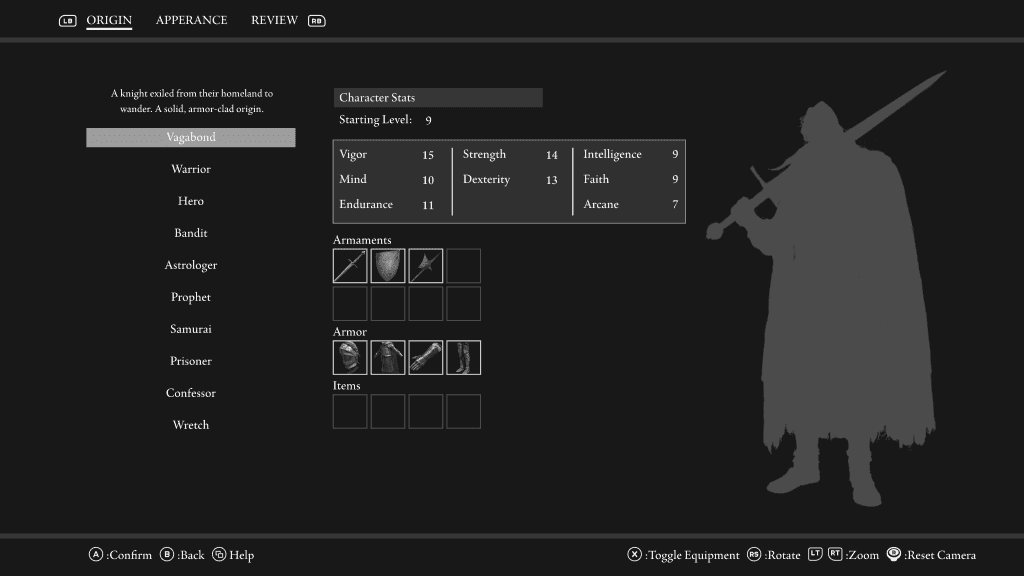





Inspiration
I drew inspiration from Shen Jia's stylized recreation of Elden Ring's starting area, which sparked the idea to incorporate a more vibrant, approachable Legend of Zelda-style UI into my final designs, blending the gameplay needs of Elden Ring with the intuitive, player-friendly elements characteristic of Zelda games. This approach aimed to enhance accessibility and visual clarity while respecting the game's original ambiance.
Inspiration
I drew inspiration from Shen Jia's stylized recreation of Elden Ring's starting area, which sparked the idea to incorporate a more vibrant, approachable Legend of Zelda-style UI into my final designs, blending the gameplay needs of Elden Ring with the intuitive, player-friendly elements characteristic of Zelda games. This approach aimed to enhance accessibility and visual clarity while respecting the game's original ambiance.
Final Prototypes









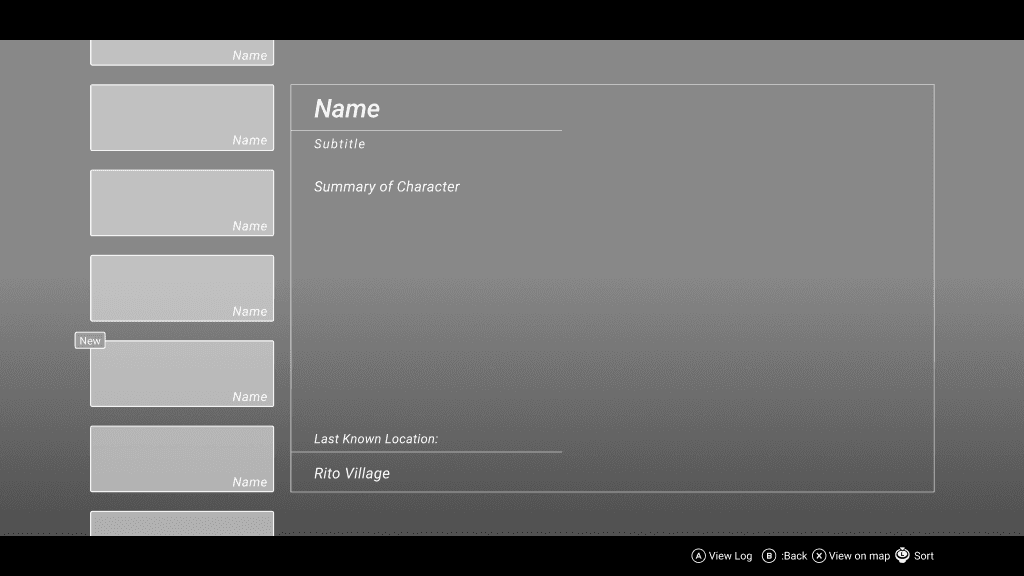


Graphic & UI Design
References
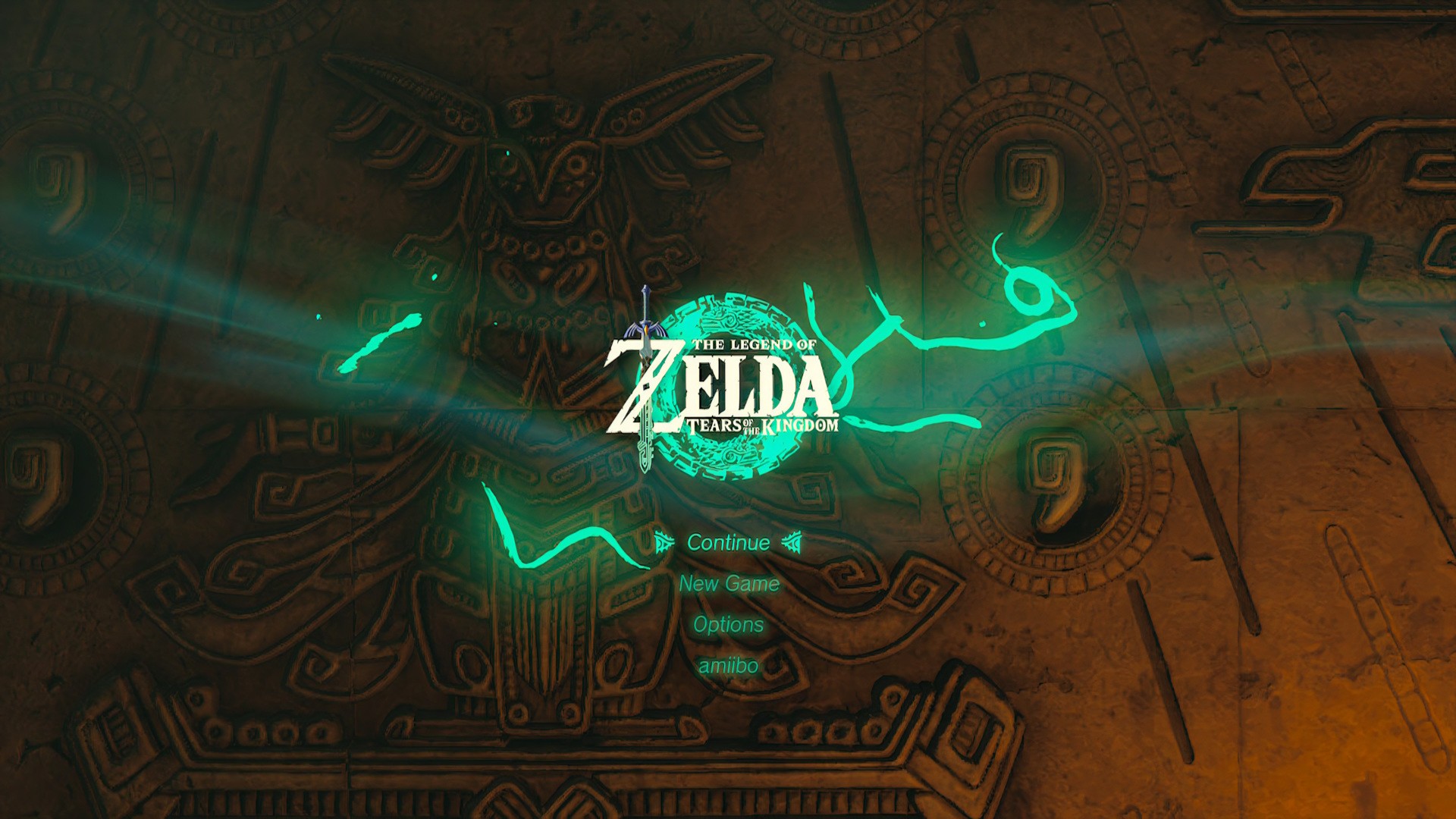


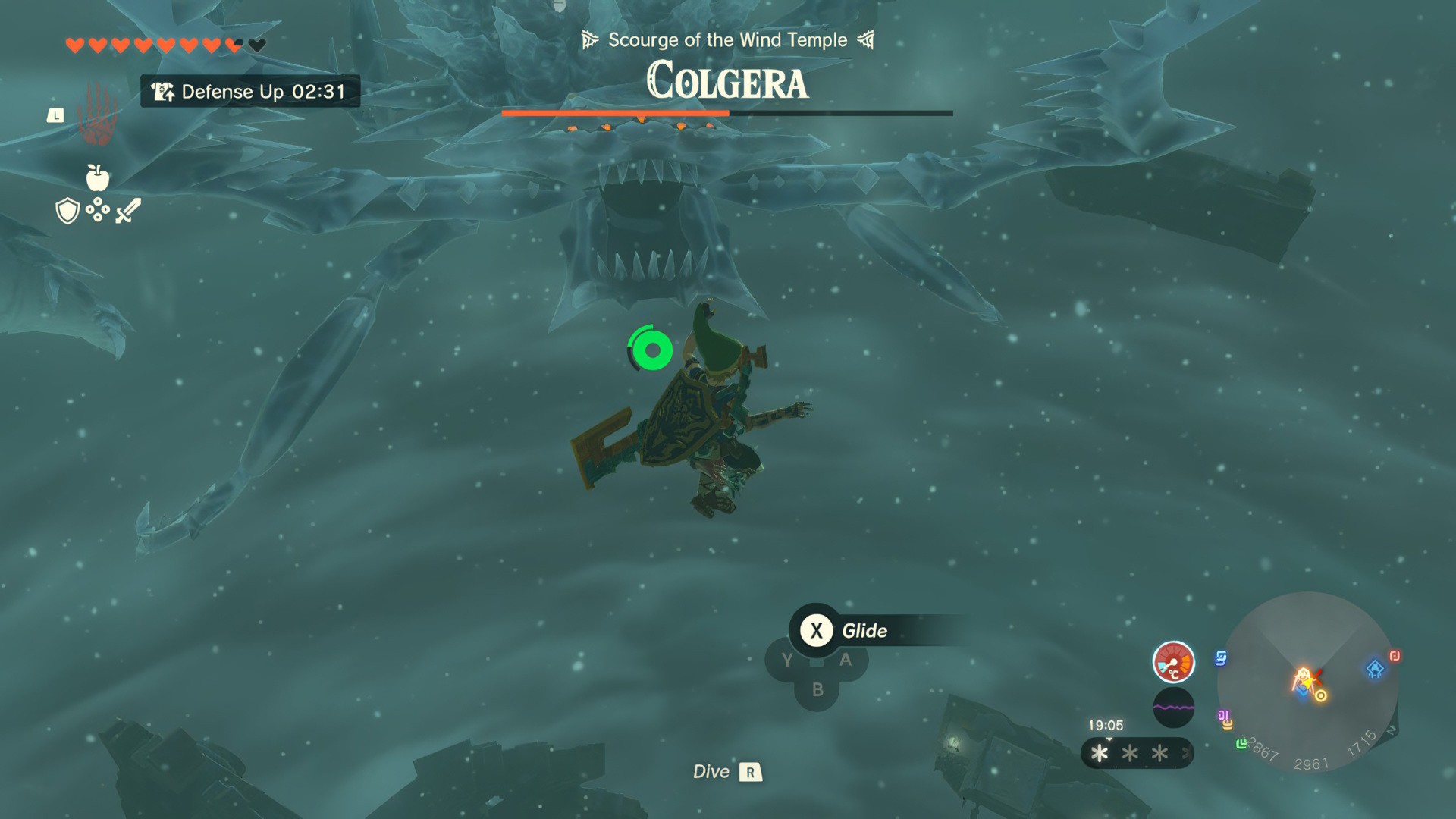


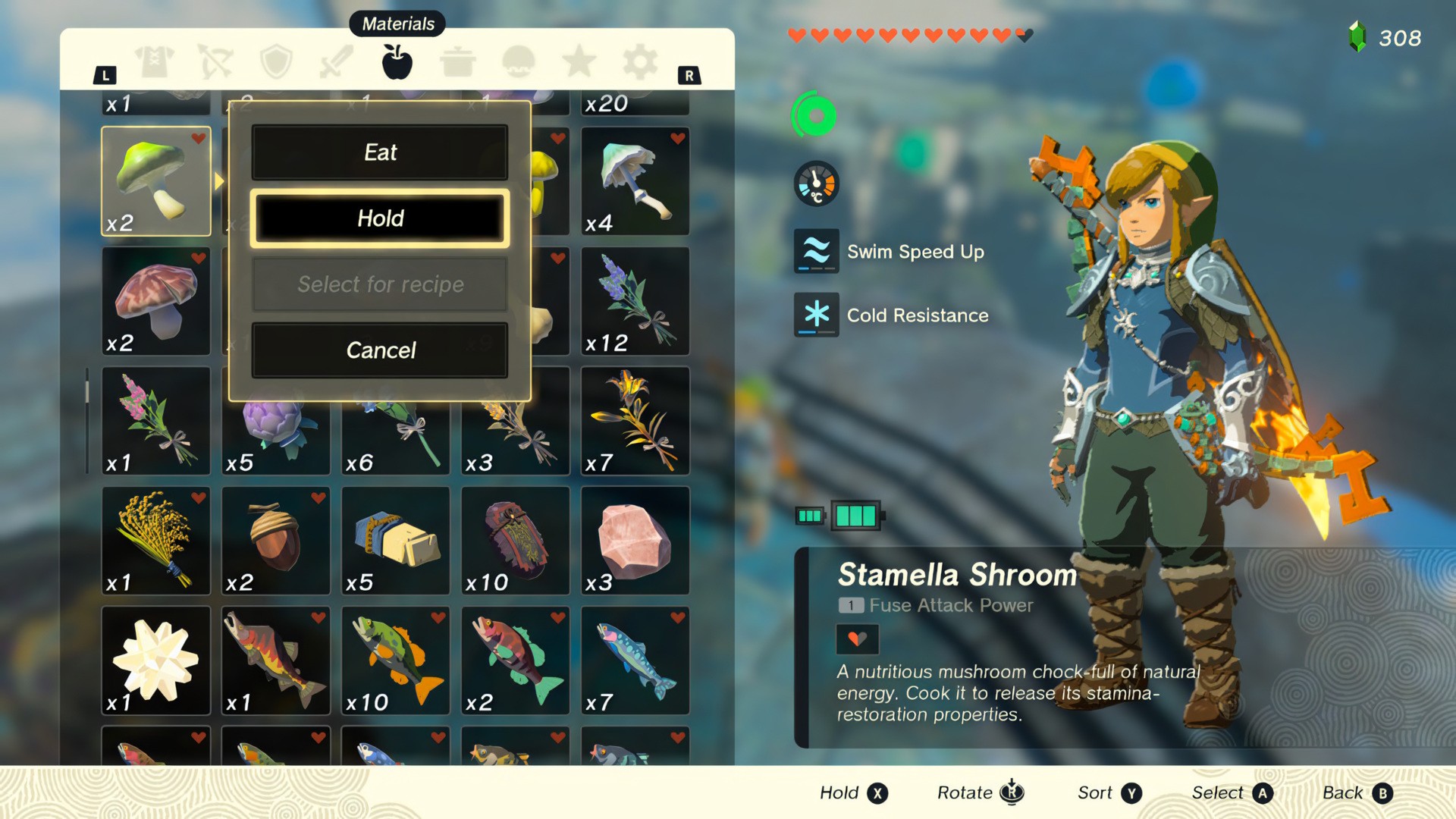








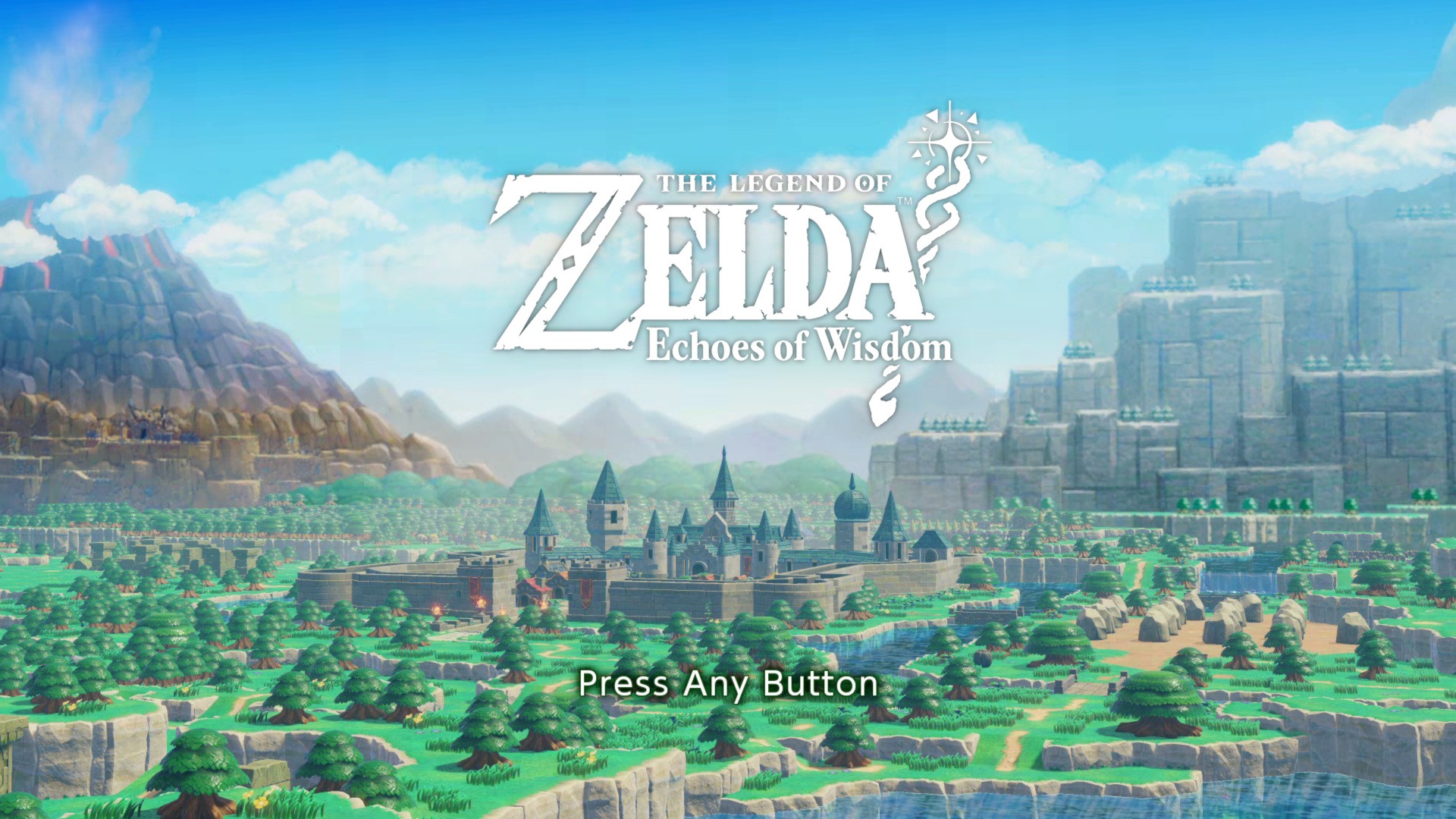


The Legend of Zelda: Tears of the Kingdom, Breath of the Wild & Echoes of Wisdom (images provided by gameuidatabase.com)
The Legend of Zelda: Tears of the Kingdom, Breath of the Wild & Echoes of Wisdom
(images provided by gameuidatabase.com)
The Legend of Zelda: [Tears of the Kingdom, Breath of the Wild & Echoes of Wisdom]
(images provided by gameuidatabase.com)
Explorations
Final



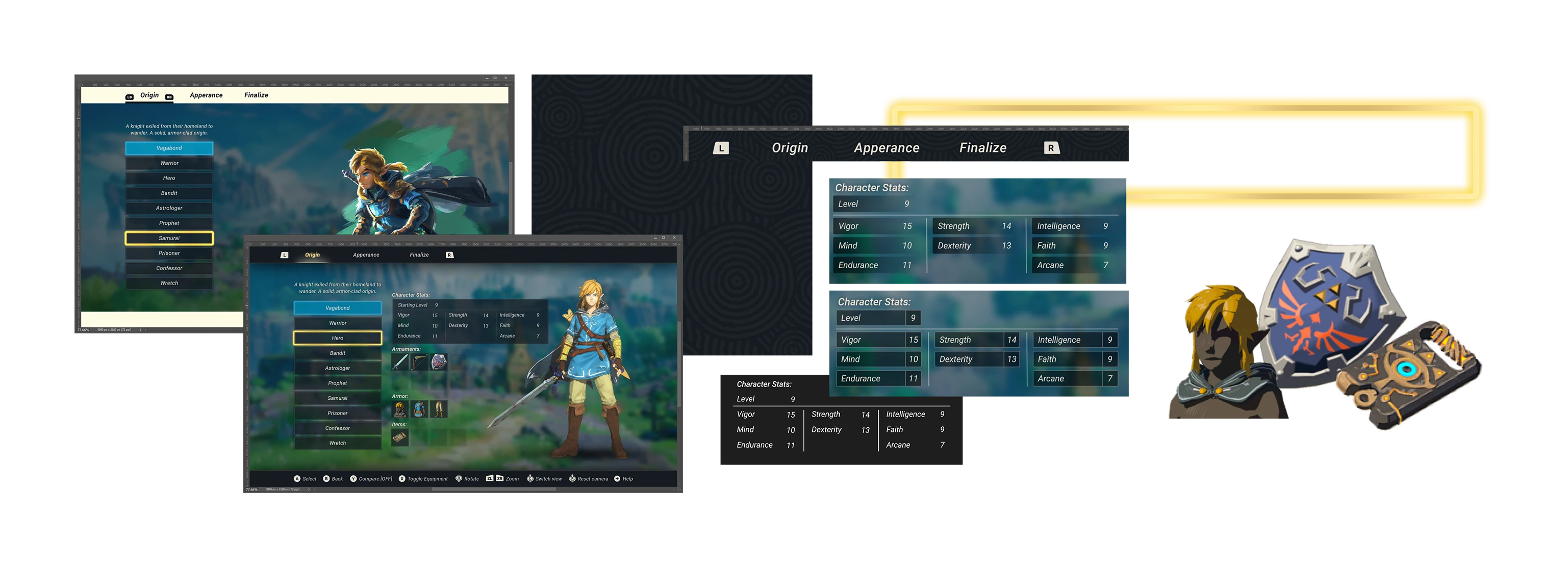





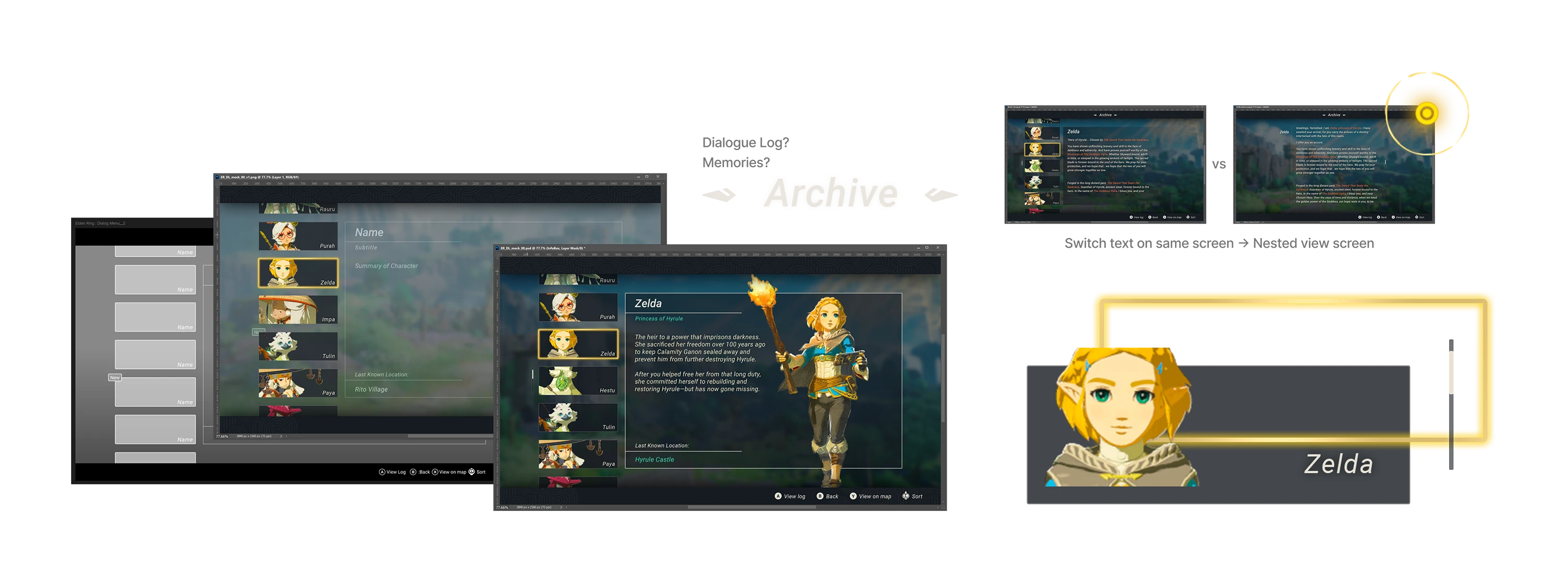

















Style Guide
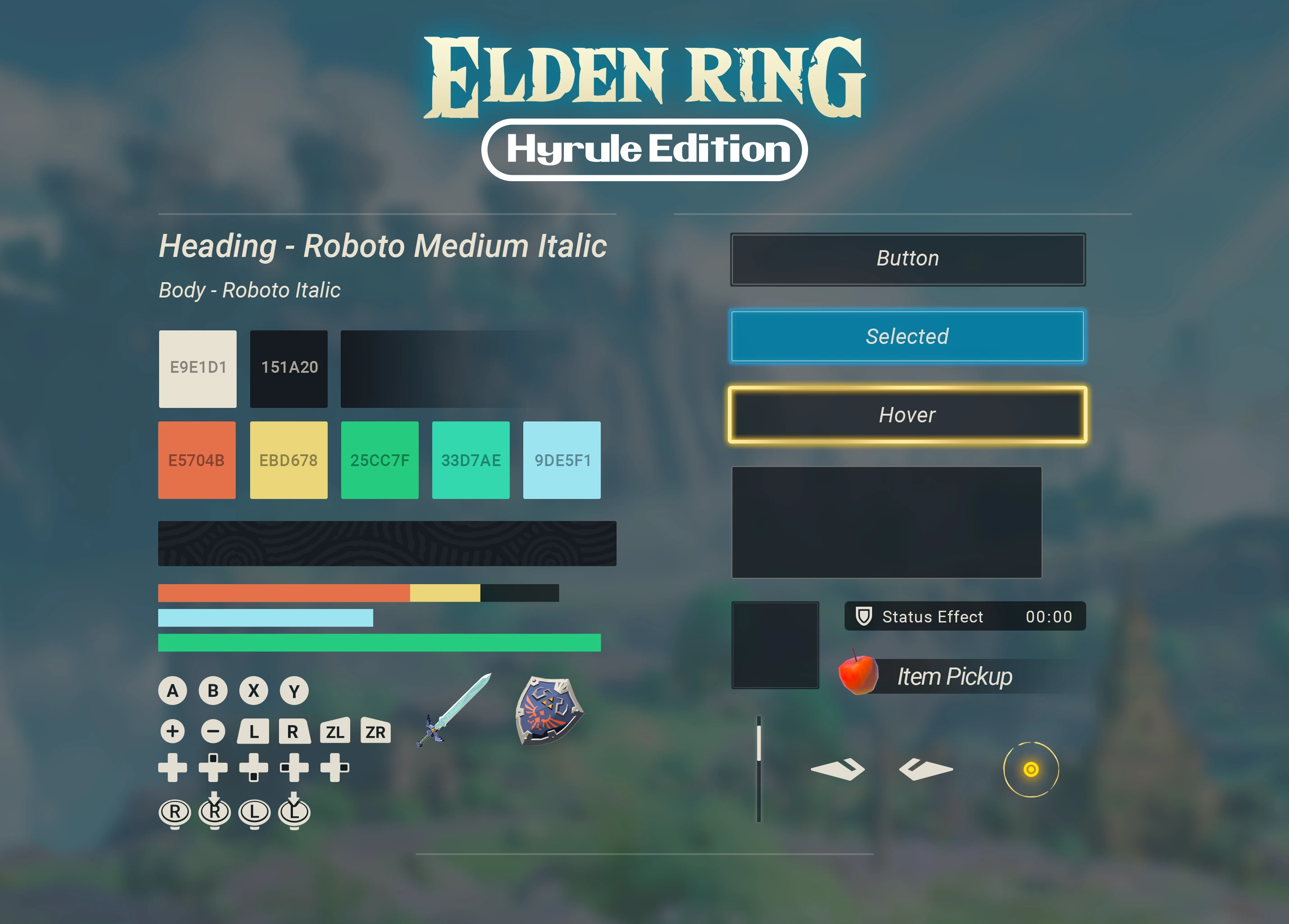


User Testing & Initial Prototypes
The approach I took for the color blind accessibility test was to start with a color pallet that works for players generally and create separate pallet(s) for
protanopia, deuteranopia, and tritanopia. Optimally we’d also give players the option to color pick for select UI elements as well to ensure the most color visibility/differences.
User Testing & Initial Prototypes
The approach I took for the color blind accessibility test was to start with a color pallet that works for players generally and create separate pallet(s) for
protanopia, deuteranopia, and tritanopia. Optimally we’d also give players the option to color pick for select UI elements as well to ensure the most color visibility/differences.
Color Blind Testing Example
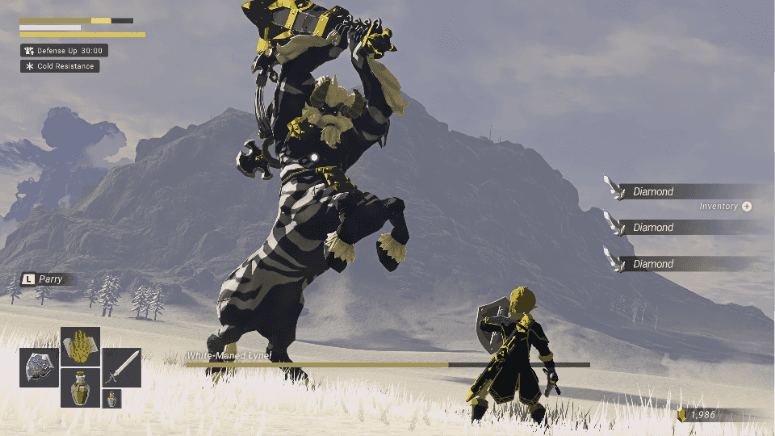


Protanopia
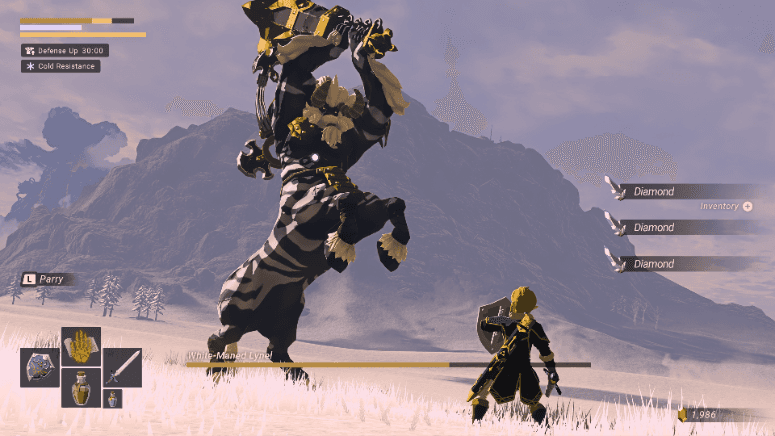


Deuteranopia
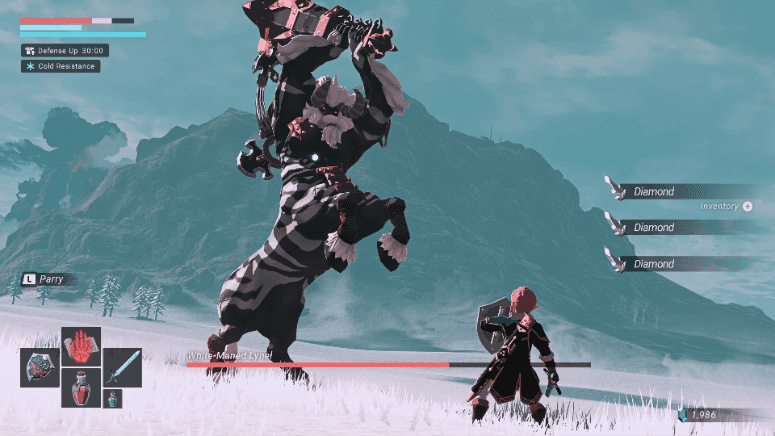


Tritanopia
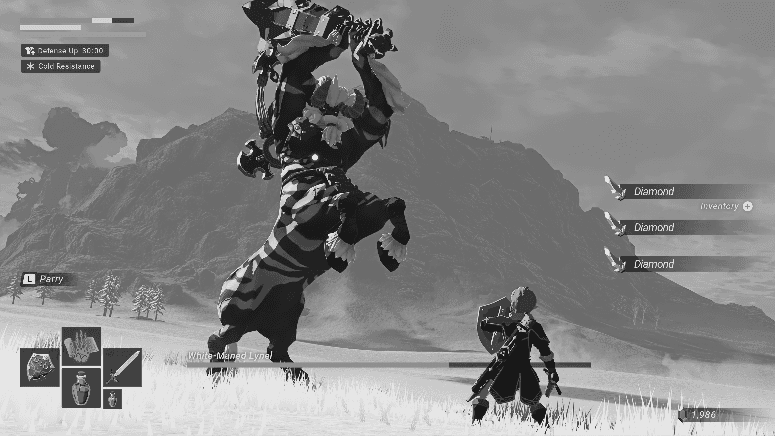


Monochromacy
Problem Areas
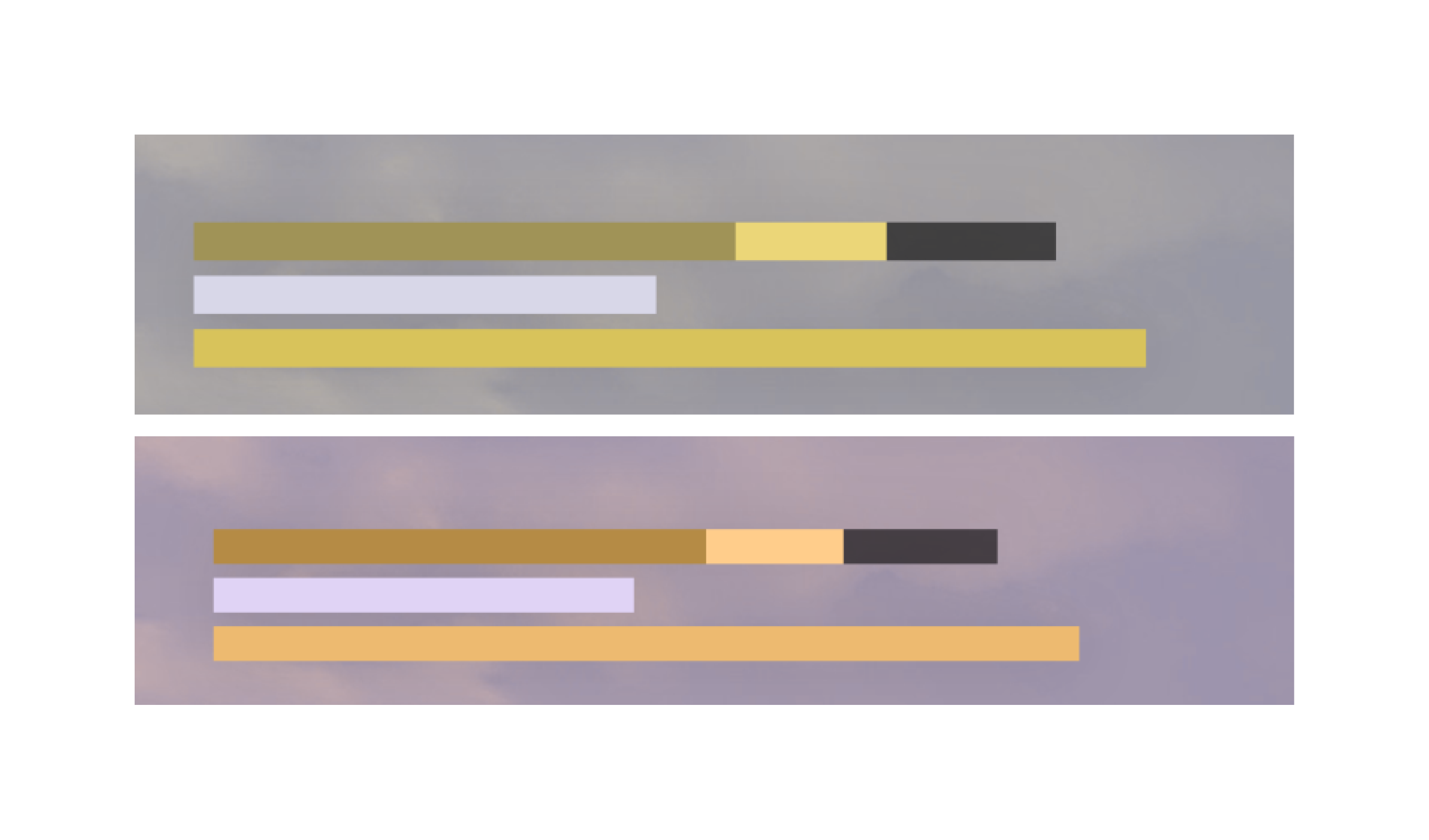


The Health loss indicator and stamina blend together and cause distracting hierarchy.
The Health loss indicator and stamina blend together and cause distracting hierarchy.



'FP' and Stamina are too similar
'FP' and Stamina are too similar



lack of contract between some elements background (needs to accommodate for changing backgrounds/light levels)
lack of contract between some elements background (needs to accommodate for changing backgrounds/light levels)
Fixes



New color safe pallet
New color safe pallet



Value changes & borders added to increase contrast
Value changes & borders added to increase contrast
Color Blind Mode and Monochrome Mode



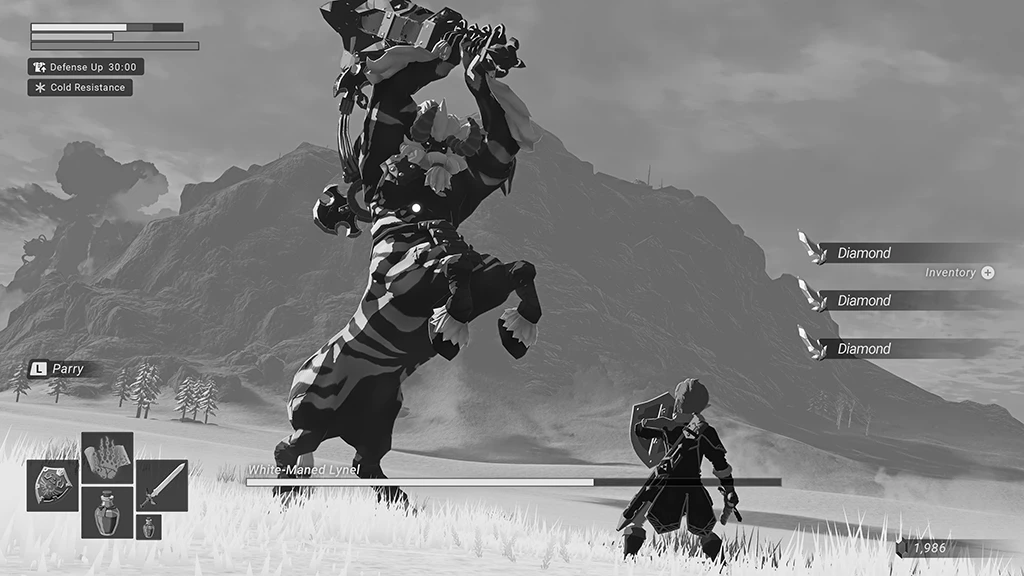


As part of my research, I studied games like Horizon: Forbidden West and Star Wars Jedi: Survivor, both of which offer extensive accessibility options that enable a highly customizable player experience. The follow is a list of additional proposed option to add to Elden Ring.
Pause (game design vs accessibility)
High Contrast Mode
Audio Customization
Captions & Subtitles
Dynamic HUD scaling
Slow Mode (Controversial!)
As part of my research, I studied games like Horizon: Forbidden West and Star Wars Jedi: Survivor, both of which offer extensive accessibility options that enable a highly customizable player experience. The follow is a list of additional proposed option to add to Elden Ring.
Pause (game design vs accessibility)
High Contrast Mode
Audio Customization
Captions & Subtitles
Dynamic HUD scaling
Slow Mode (Controversial!)
Outcomes & Reflection
Gained a greater understanding of the ux/ui design process in gaming.
Finalized a hybrid UI style, which maintained Elden Ring's distinct game design while enhancing user-friendly interactions.
Validated the new “Archive” feature (a dialogue log) through testing; players found it helpful for tracking NPC interactions without detracting from the open-world experience.
Improved start menu and character creation screens based on user feedback, resulting in more intuitive navigation and clearer presentation of options.
Demonstrated the feasibility of integrating accessibility and usability improvements into challenging gameplay, setting a foundation for broader inclusivity in future Elden Ring projects or similar games.
Outcomes & Reflection
Gained a greater understanding of the ux/ui design process in gaming.
Finalized a hybrid UI style, which maintained Elden Ring's distinct game design while enhancing user-friendly interactions.
Validated the new “Archive” feature (a dialogue log) through testing; players found it helpful for tracking NPC interactions without detracting from the open-world experience.
Improved start menu and character creation screens based on user feedback, resulting in more intuitive navigation and clearer presentation of options.
Demonstrated the feasibility of integrating accessibility and usability improvements into challenging gameplay, setting a foundation for broader inclusivity in future Elden Ring projects or similar games.
©2025 ben lyons. All rights reserved.
©2025 ben lyons. All rights reserved.
©2025 ben lyons. All rights reserved.
